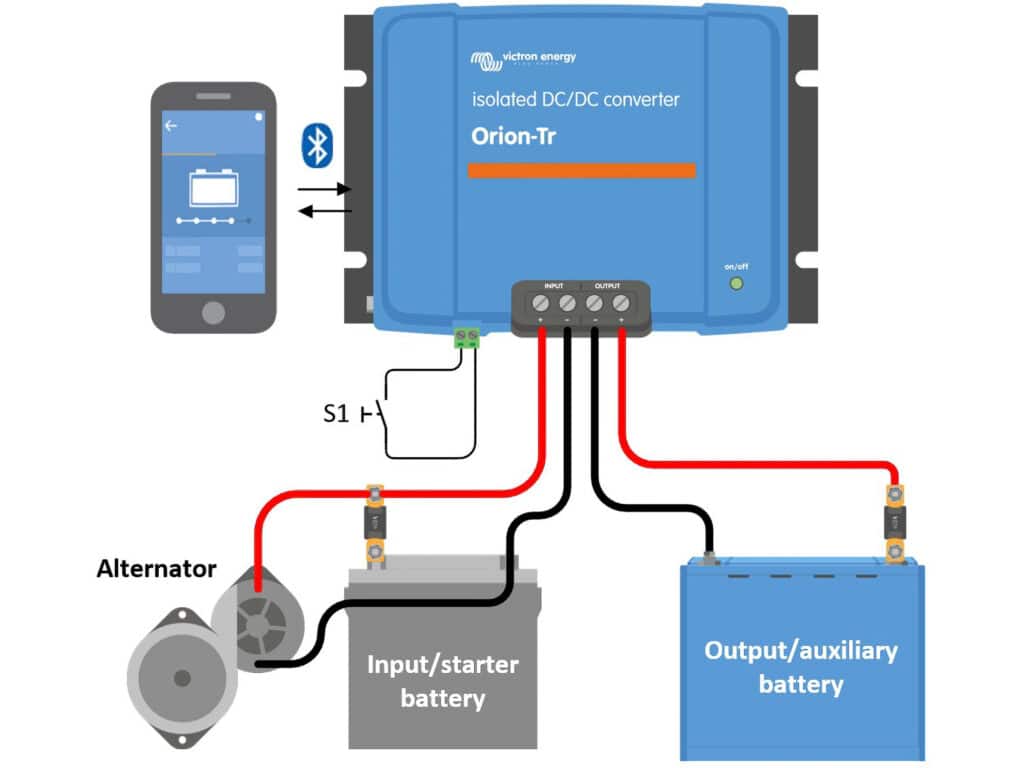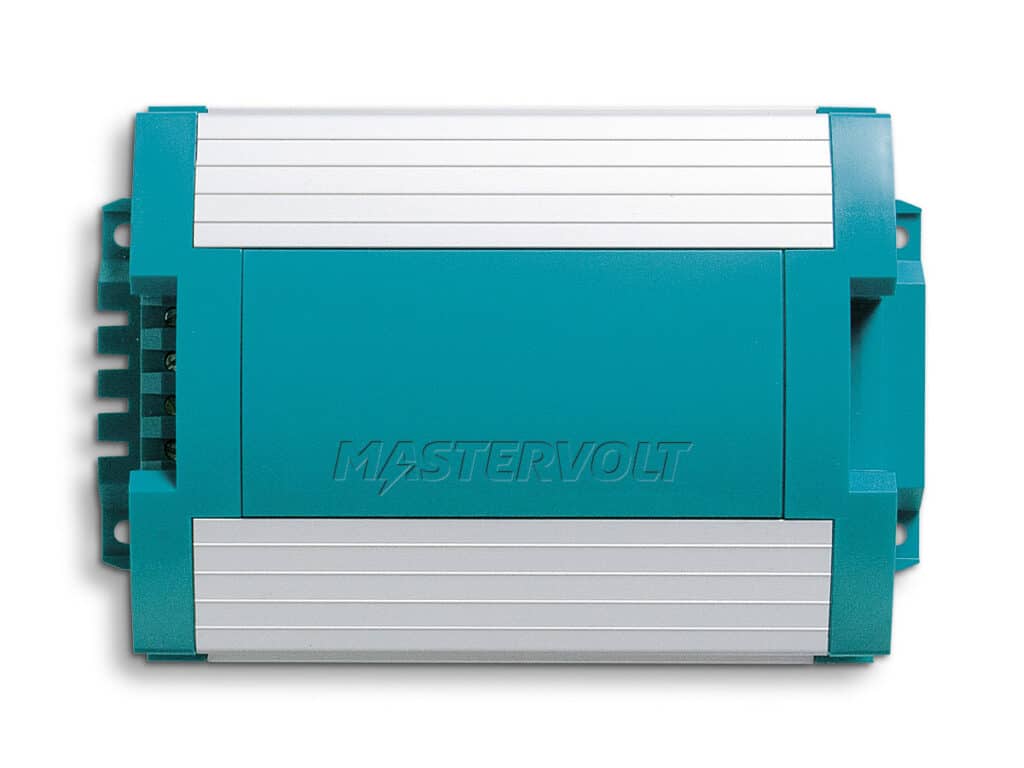
Increasing numbers of boaters are turning to lithium-iron-phosphate (LiFePO4) batteries to power house circuits and electric trolling motors. This brings up a question: Can boaters effectively replenish these marine batteries by harvesting engine alternator amps while underway?
The answer is yes, but with a caveat. To wit, charging-on-the-fly methodology for LiFePO4 batteries differs from using traditional automatic charging relays (ACRs), says Craig Quentin, manager of technical business development for the Navico Group, a division of Brunswick Corp. “An ACR is a pass-through device that simply redirects excess engine-alternator amps to the house bank once the starting bank reaches full charge.”
That works fine if the house battery is a lead-acid variety, such as a deep-cycle AGM, but the engine-alternator charging profile is not well-suited to a LiFePO4 battery, Quentin says. (This is why almost all starting batteries use lead-acid technology.) An ACR system will not adequately charge a LiFePO4 house-battery system. What’s more, it can even damage a marine engine alternator if, for instance, the
LiFePO4 house battery goes into protection mode, Quentin warns. In this situation, it can fry a diode in the alternator, leading to an expensive engine repair.
The best and safest answer lies in using a DC-to-DC (direct current to direct current) charger, which serves as a battery isolator like an ACR but can also convert excess amps from the starting bank to a powerful lithium-style profile, which is needed to quickly bring a LiFePO4 house bank to full charge, according to Quentin.
DC-to-DC chargers are available from brands such as Mastervolt (a Navico company), JL Marine and Victron Energy. These systems offer choices in voltage input and output, as well as amperage output.
Quentin points out that boaters should not rely solely on a DC-to-DC charger for a
LiFePO4 house bank. “You will need a lithium-specific AC battery charger, even with a DC-to-DC charger,” he says. Without a dedicated lithium charger that operates off of AC shore power or household current, such as a ProMariner Pro Tournament Elite Series 2 (starting at $334.90; amazon.com), Quentin says the lithium bank will not receive a full charge between trips.
The age of lightweight, long-running and fast-charging LiFePO4 marine batteries has arrived, and retail prices seem to be declining, which will only drive demand. As more and more boaters tap into this advanced electrical power source, they will also need to tap into new ways of thinking and different equipment when it comes to charging up, be it while underway, at the dock or on the trailer.
Read Next: The Benefits of 48-Volt Charging in Fathom 2.0

Three DC-to-DC Chargers
Here are three brands of DC-to-DC on-the-fly marine battery chargers for both lead-acid and lithium house-battery systems.
Mastervolt Magic Series
The Mastervolt Magic not only provides DC-to-DC battery charging, but can also convert voltage (e.g., 12 to 24 volts), stabilize current for voltage-sensitive electronics, offer galvanic isolation between input and output battery sources, and serve as a dimmer for onboard illumination systems. It’s available in 12-volt input versions that output 12 volts at 20 amps or 24 volts at 10 amps. Starting at $388.34; hodgesmarine.com
JL Marine Charge System
The Charge system from JL Marine can utilize shore power, household AC current or the engine alternator to charge up to three house batteries (at 25 amps), plus the starting battery (at 50 amps) all at once. It will work with virtually all battery types—lead-acid, flooded-cell, gel and AGM—as well as LiFePO4 batteries. With the JL Marine C-Monster app, you can monitor battery status and prioritize either the trolling or starting batteries when recharging. $1,599.99; power-pole.com
Victron Orion-Tr Smart Series
The Orion-Tr Smart Series (top) from Victron Energy provides battery isolation and on-the-fly DC-to-DC charging for 12- or 24-volt systems, and is suitable for both marine lead-acid and LiFePO4 batteries. It is available in 12-to-12-, 12-to-24-, 24-to-24- and 24-to-12-volt versions. Bluetooth capabilities allow for wireless monitoring and programming via the VictronConnect app on a smartphone. Starting at $120.70; amazon.com









